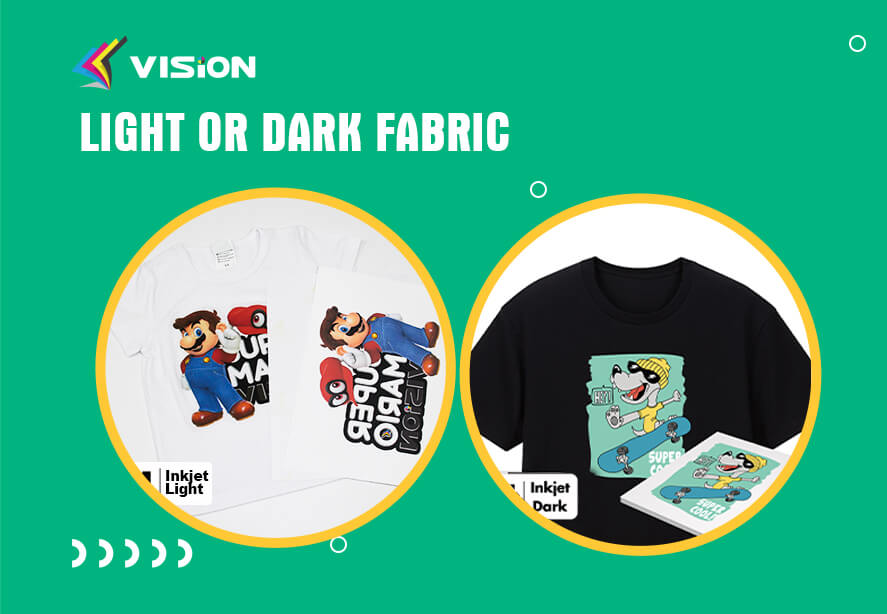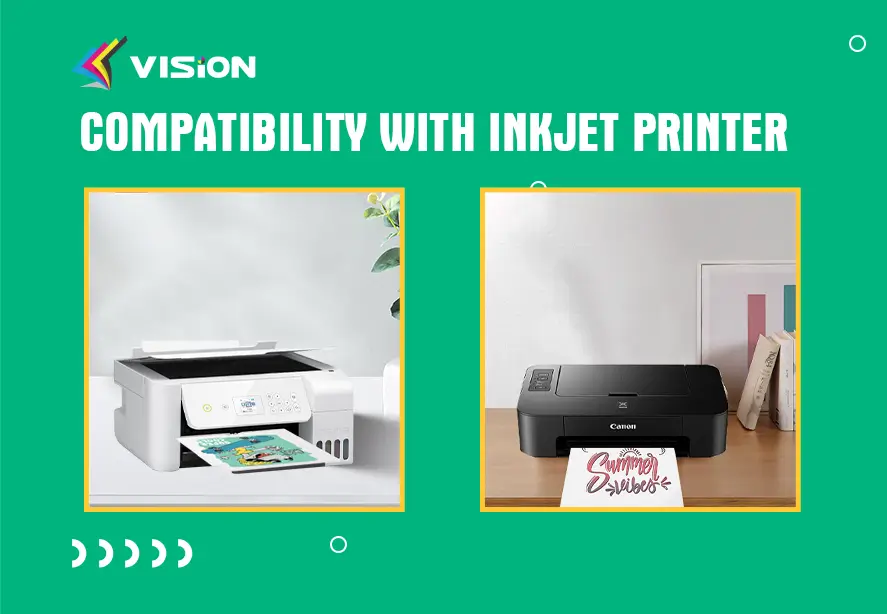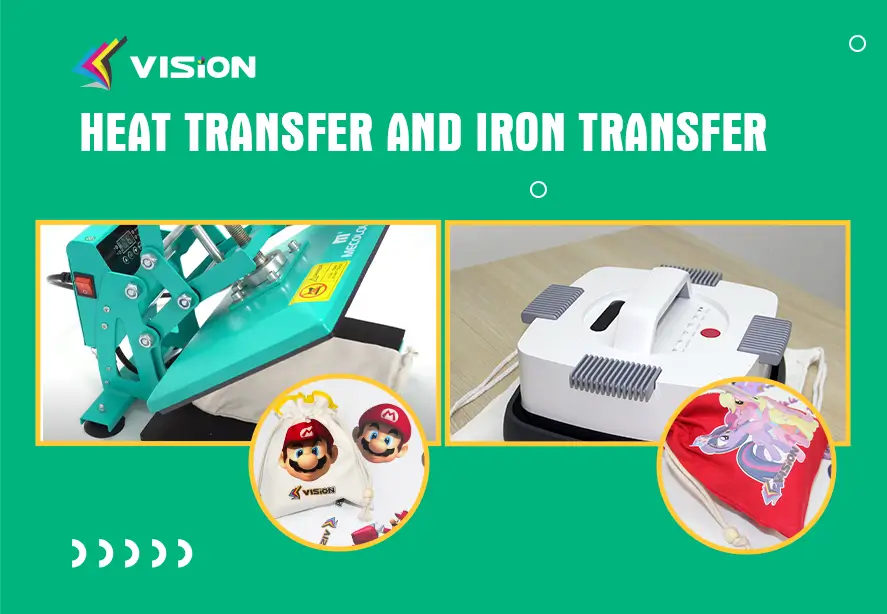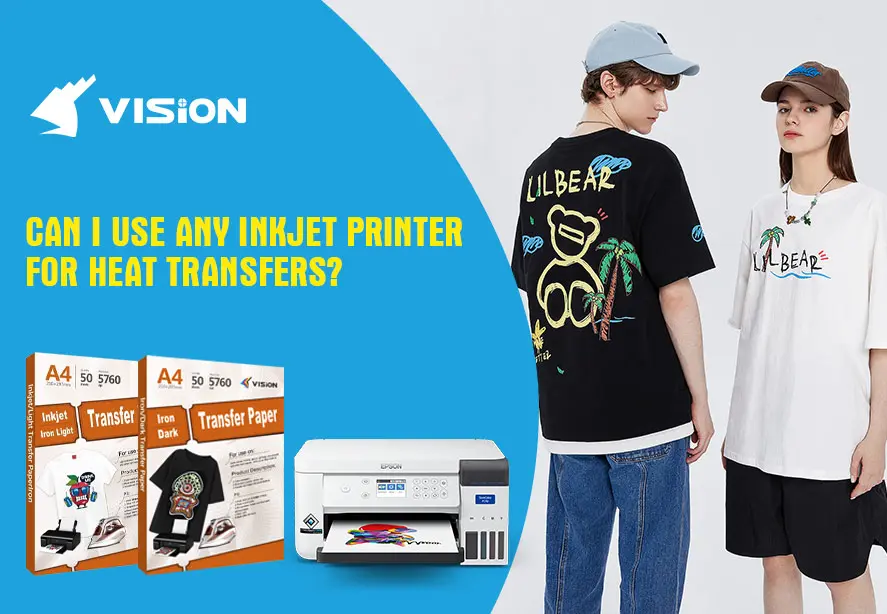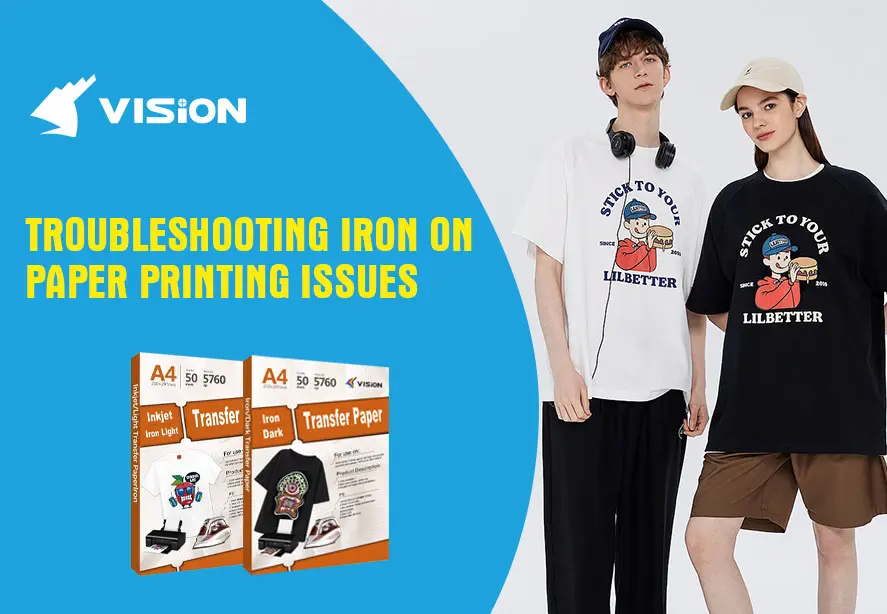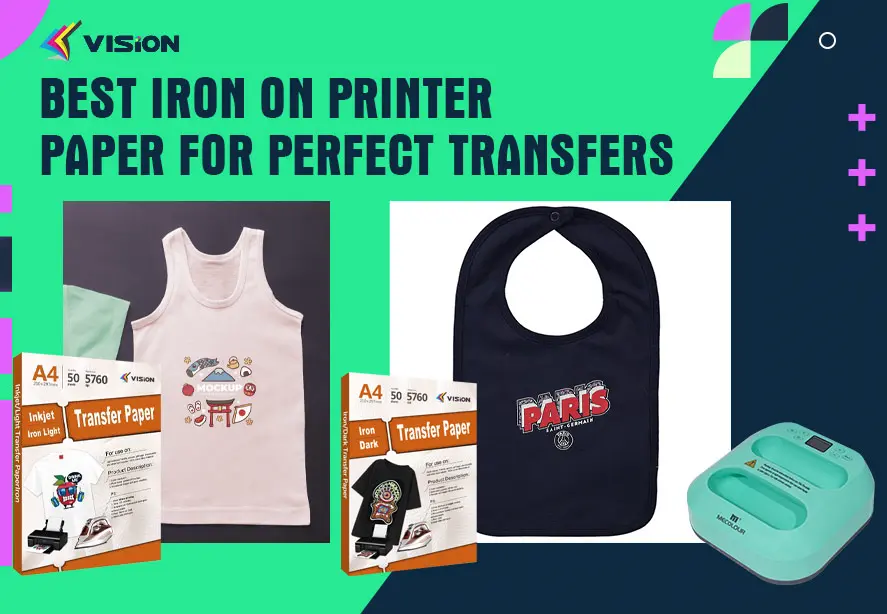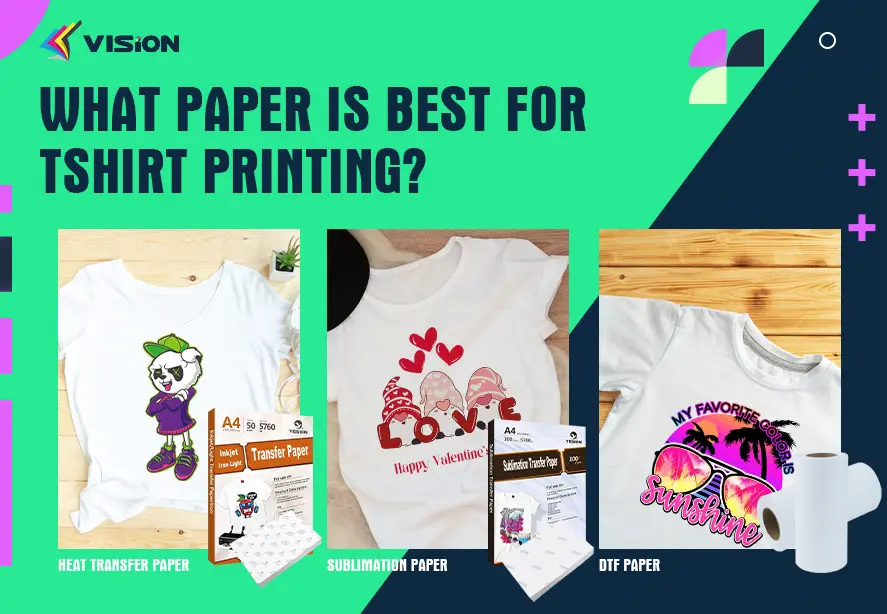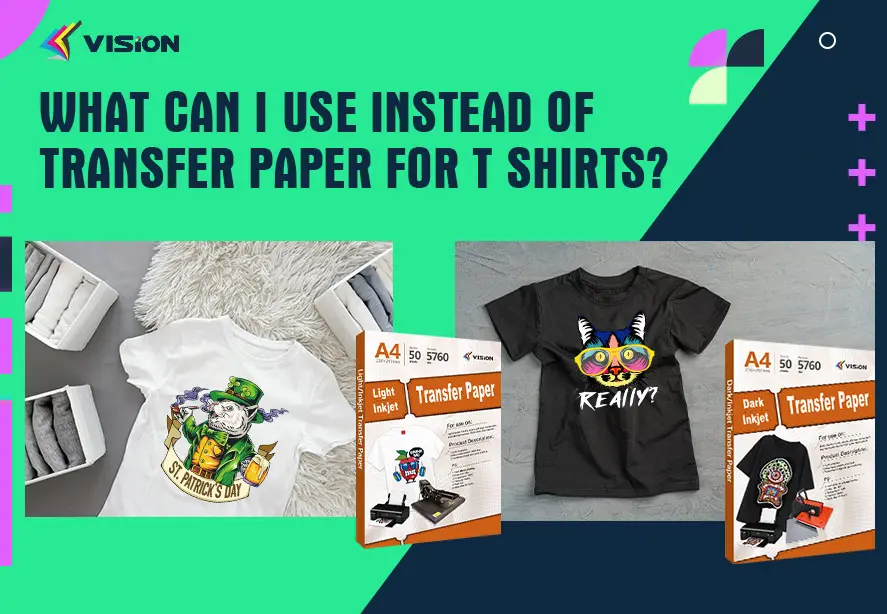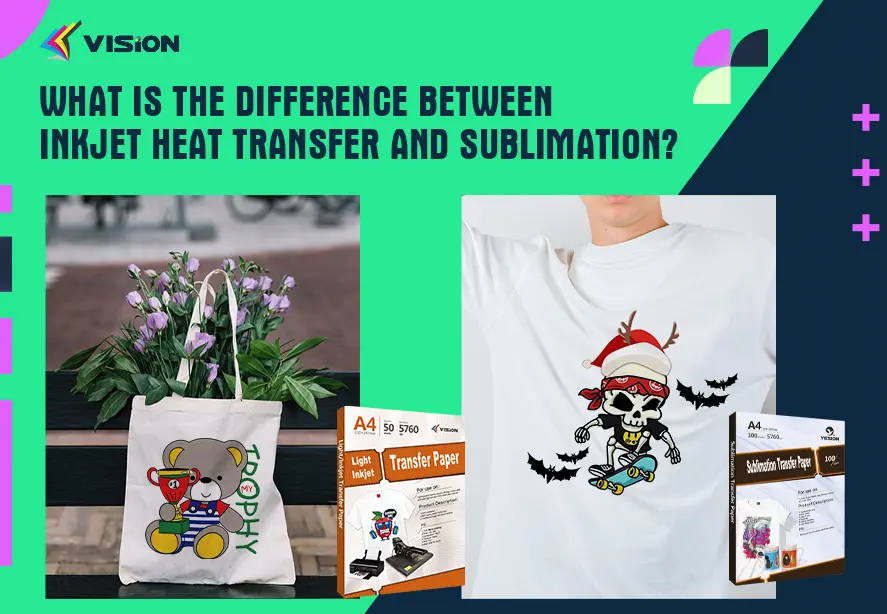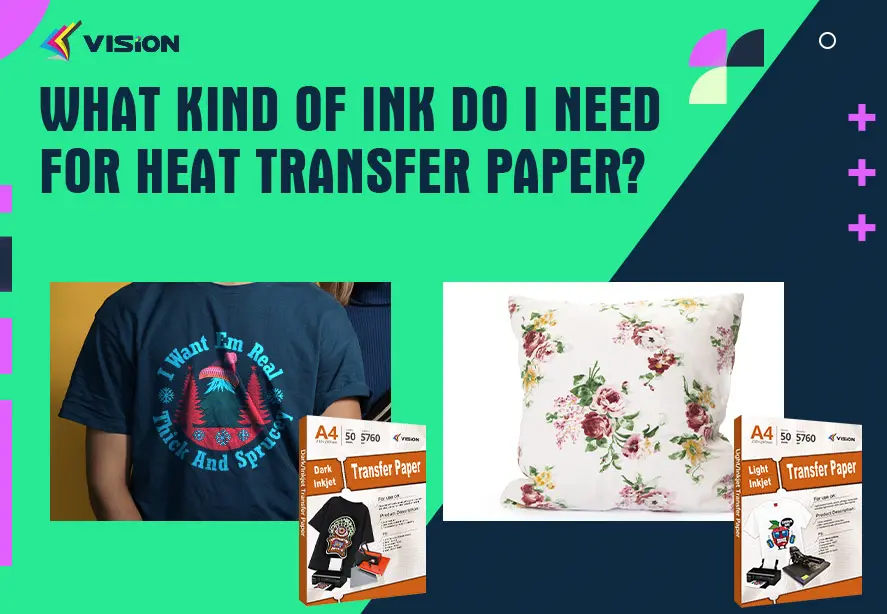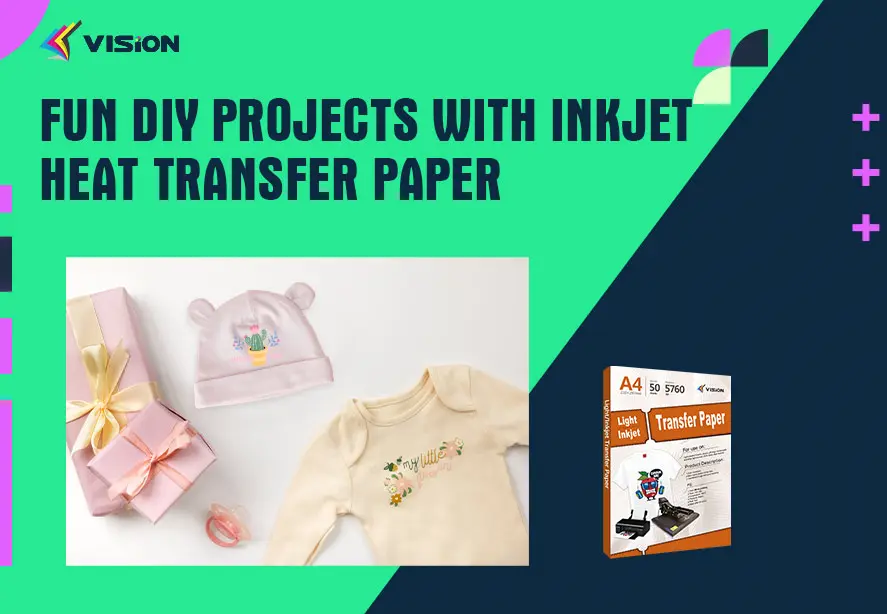Choose the Perfect Inkjet Transfer Paper: Ultimate Guide
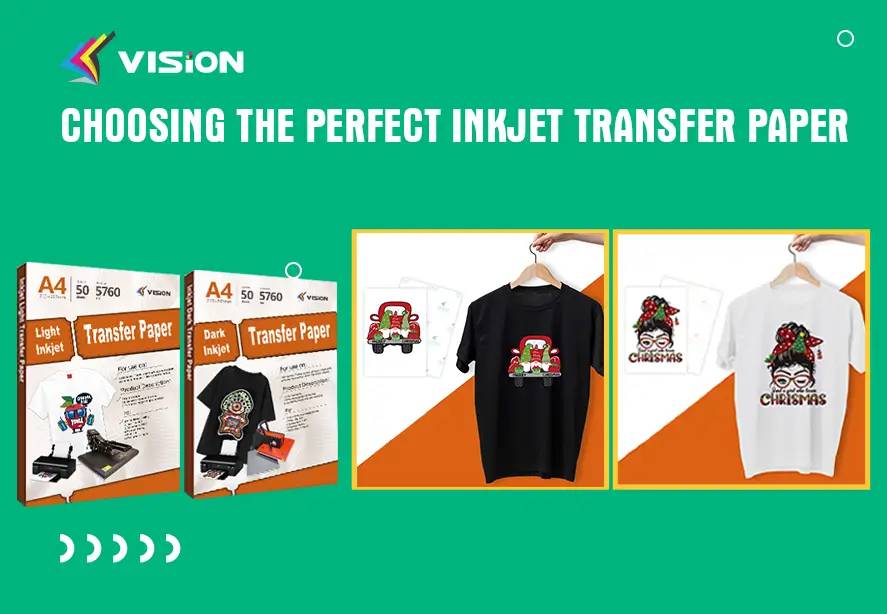
Another crucial factor to consider is whether you will be transferring your design onto a light-colored or dark-colored fabric. Transfer papers are specifically formulated for either light or dark fabrics. Light fabric transfer papers are designed to be transparent, allowing the fabric color to show through the design. On the other hand, dark fabric transfer papers have a white background that ensures vibrant colors and prevents the fabric color from interfering with the design. Selecting the appropriate transfer paper for the fabric color is crucial to achieve the desired outcome.
3. Washability and Durability
Consider the washability and durability requirements of your project. If you plan to transfer your design onto garments or items that will be frequently washed or exposed to harsh conditions, it is essential to choose a transfer paper that offers excellent wash resistance and durability. Some transfer papers are designed to withstand multiple washes without fading or peeling, ensuring that your designs remain vibrant and intact for a long time.
4. Compatibility with Inkjet Printer
Ensure that the inkjet transfer paper you choose is compatible with your inkjet printer. Most transfer papers are designed to work with both dye-based and pigment-based inks, but it is always a good idea to check the product specifications or consult the transfer paper manufacturer to ensure compatibility. Using the wrong type of ink can result in smudged or faded prints.
5. Image Quality
Consider the image quality you desire for your project. Different transfer papers have varying levels of image quality and color reproduction. If you are looking for high-resolution prints with vibrant colors and sharp details, opt for transfer papers that offer superior image quality. It is essential to read product reviews and check sample prints to assess the image quality before making a purchase.
6.Transfer Methods
Cold Peel vs. Hot Peel
The transfer method can influence the ease of application and the final result. Cold peel requires the transfer to cool completely before peeling, while hot peel involves immediate removal after the transfer process.
Pros and Cons of Each Method
Evaluate the pros and cons of each method based on your preference and project requirements. Some may prefer the convenience of hot peel, while others appreciate the precision of cold peel.
7.Quantity vs. Cost Analysis
Buying in Bulk vs. Individual Packs
Consider your project scale when purchasing transfer paper. Buying in bulk can be cost-effective for larger projects, but be mindful of the expiration date to avoid waste.
Considering Cost-Effectiveness and Storage
Evaluate the overall cost of each sheet or pack, factoring in the quantity needed. Additionally, consider the storage requirements to maintain the paper’s quality over time.
Types of Inkjet Transfer Papers
1. Light Fabric Transfer Paper
Light fabric transfer paper is designed for transferring designs onto light-colored fabrics. It has a transparent background that allows the fabric color to show through the design. Light fabric transfer papers usually provide a soft and flexible feel to the transferred design, making it ideal for garments and other fabric-based projects. They are available in different finishes, including matte and glossy, allowing you to choose the desired look for your project.
How to use vision inkjet light heat transfer paper for cotton tshirt?
2. Dark Fabric Transfer Paper
Dark fabric transfer paper is specifically formulated for transferring designs onto dark-colored fabrics. It has a white background that ensures vibrant colors and prevents the fabric color from interfering with the design. Dark fabric transfer papers often offer excellent opacity, allowing for vibrant and opaque prints on dark fabrics. They are typically available in matte finishes to provide a natural look on fabric.
How To Use Vison Inkjet Dark Heat Transfer Paper for Cotton Fabric?
More inkjet transfer paper videos, please follow VISION youtube.
3. Multi-Purpose Transfer Paper
Multi-purpose transfer paper is a versatile option that can be used on both light and dark fabrics. It offers the convenience of transferring designs onto a variety of fabric colors without the need for separate papers. Multi-purpose transfer papers usually have a transparent background for light fabrics and a white background for dark fabrics. While they offer versatility, it’s important to note that the image quality and opacity may vary compared to dedicated light or dark fabric transfer papers.
4. Specialty Transfer Paper
In addition to the standard light and dark fabric transfer papers, there are specialty transfer papers available for specific applications. These include transfer papers for ceramics, wood, metal, and other surfaces. Specialty transfer papers are designed to withstand the heat and pressure required for transferring designs onto non-fabric surfaces. They often have different coating compositions and adhesive properties to ensure proper adhesion and durability on these surfaces.
Tips for Achieving the Best Results
1. Follow the Instructions
Always read and follow the instructions provided by the manufacturer of the inkjet transfer paper. Each transfer paper may have specific instructions regarding printing, cutting, and transferring the design. Following the instructions carefully will help you achieve the best results and prevent any issues during the transfer process.
2. Test Prints
Before transferringyour final design onto your desired fabric or surface, it is highly recommended to perform test prints. This allows you to assess the color accuracy, image quality, and overall appearance of the transferred design. Use a small piece of the transfer paper and a scrap fabric or surface similar to what you will be using for your project. By doing test prints, you can make any necessary adjustments to your design or printer settings before committing to the final transfer.
3. Prepare the Surface
Ensure that the fabric or surface you will be transferring your design onto is clean and free of any dirt, oils, or wrinkles. Pre-washing fabrics can help remove any residue or sizing that may affect the adhesion of the transfer. Smooth out any wrinkles or creases to ensure a flat and even surface for the transfer.
4. Cut and Trim Carefully
When cutting out your design from the transfer paper, use sharp scissors or a craft knife to achieve clean and precise edges. Take your time to trim around intricate details and curves, ensuring that you do not cut into the design itself. Clean edges will contribute to a professional-looking final result.
5. Apply Heat and Pressure Evenly
The transfer process requires heat and pressure to ensure proper adhesion of the design onto the fabric or surface. Use a heat press, iron, or any other recommended heat transfer tool to apply consistent heat and pressure. Follow the instructions provided by the transfer paper manufacturer for the recommended temperature, pressure, and duration of the transfer process. Applying heat and pressure evenly across the entire design will help prevent any areas from lifting or fading.
Related:
The Difference Between Iron-On Transfer Paper and Heat Transfer Paper
6. Allow Sufficient Cooling and Settling Time
After the transfer process, allow the fabric or surface to cool down completely before handling or washing. This cooling and settling time allows the transferred design to fully adhere and set onto the material, ensuring better washability and durability. Rushing this step may lead to premature fading or peeling of the design.
7. Wash and Care Instructions
Follow the recommended wash and care instructions provided by the transfer paper manufacturer. Some transfer papers may require specific washing conditions, such as using cold water or avoiding harsh detergents or bleach. By following the proper care instructions, you can prolong the life of your transferred designs and maintain their vibrant colors.
Conclusion
Choosing the right inkjet transfer paper is crucial for achieving high-quality and long-lasting results in your custom design projects. Consider factors such as fabric or surface type, fabric color, washability, printer compatibility, and image quality when selecting the appropriate transfer paper. Different types of transfer papers, including light fabric, dark fabric, multi-purpose, and specialty papers, cater to specific project requirements. By following the provided tips and instructions, you can ensure a successful transfer process and enjoy the satisfaction of seeing your designs come to life on various materials.
Related:
The 4 Types of Inkjet Transfer Paper for Heat Press
Best Iron-On Transfer Paper for Inkjet Printers
Inkjet Dark Heat Transfer Paper: Unleash Your Creativity


